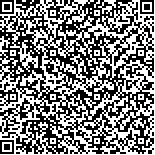下载中心
优秀审稿专家
优秀论文
相关链接
摘要

第二代星载激光雷达冰、云和陆地测高卫星ICESat-2(The Ice, Cloud, and Land Elevation Satellite-2)搭载了先进光子计数式激光雷达,使用了全新的微脉冲多波束光子计数式激光雷达。由于光子计数式激光雷达的自身特点,其光子云数据具有受噪声光子影响大、信噪比与扫描时间相关、光子分布密度不均匀等问题,目前开发的去噪算法并不能很好的应用于不同的光子云数据。基于以上问题,本文提出一种改进的去噪算法,首先分析光子云内部特征并自适应选择最优参数进行粗去噪,然后进行两次精去噪,最后对光子云进行分类并拟合出地面线及冠层顶线,为提取森林冠层高度提供基础。使用该算法对MABEL数据进行去噪实验,实验结果表明:该去噪算法的一次去噪对不同环境下MABEL数据在夜间的去噪平均精确度为94.5%,F1-score为96.3%,日间平均精确度为86.7%,F1-score为91.7%,且三次去噪算法完成后能够显著提升光子云去噪精度。实验证明该算法对MABEL光子云数据具有较好去噪效果和稳定性,可为ICESat-2数据处理提供参考。本文的光子分类算法能够从光子数据中提取冠层顶点、地面点及林内光子并在此算法中进一步精确去除剩余噪点,最终光子分类结果显示该算法能够从复杂光子云数据中提取森林剖面结构。
The ice, cloud and land elevation satellite-2 (ICESat-2) is equipped with advanced photon counting lidar. The system is a multi-beam micro pulse photon counting radar, which has the advantages of low energy consumption, high measurement sensitivity, high repetition rate and high space operation altitude. However, due to the characteristics of the lidar, the data returned is the elevation profile photon cloud data. Due to the nature of the instrument, the data is easily affected by noise photons, observation time, observation area and so on. The photon cloud data contains a lot of background light noise. Before using the photon cloud data for canopy extraction, the efficient and high-precision photon denoising and classification algorithm is as follows It's very necessary.Based on the above problems, this paper proposes an improved triple denoising algorithm. Firstly, DBSCAN clustering algorithm is selected for the coarse denoising of photons. The eps parameters of clustering algorithm have a great influence on it. In this paper, by analyzing the correlation between the density of photon cloud and the parameters of the algorithm and the denoising results, it is proposed to select the optimal eps parameters adaptively for rough denoising according to the internal characteristics of the photon cloud The signal photons are not lost and the noise photons are removed effectively. Then, two fine denoising algorithms are carried out to remove the noise photons located at the top of the canopy and below the ground line. Finally, the optical cloud is classified and fitted to the ground line and the canopy top line. Finally, the remaining noise photons are removed according to the fitting ground line and canopy top line interval.In this paper, the algorithm is applied to ICESat-2 airborne test data (MABEL). The experimental results show that the average de-noising accuracy of the algorithm is 94.5% for nighttime data, 96.3% for F1-score, 86.7% for daytime data and 91.7% for F1-score. The results show that the denoising parameters can be selected adaptively according to the photon density of the data However, the results also show that it can not achieve good results in areas where the density of signal photons and noise photons is excessively similar. However, the overall accuracy evaluation shows that the F1-score of all segments is 91%, 92% and 95% respectively in the three times denoising algorithm. The results show that the following two denoising algorithms can accurately remove most of the remaining noise photons which are not completely removed, and significantly improve the denoising accuracy of photon cloud, which provides a guarantee for the accurate extraction of the subsequent photon categories. The overall experimental results show that the algorithm has good denoising effect and stability for MABEL photon cloud data. In the section data of denoising, the qualitative results show that the photon classification algorithm in this paper can select the canopy vertex, ground point and forest photons from the photon data based on the denoising results. The final photon classification results show that the algorithm can extract the forest profile structure from the complex photon cloud data, and retain most of the signal photons in the canopy, which can provide some reference for the subsequent tree height extraction and biomass calculation of ICESat-2 data.

